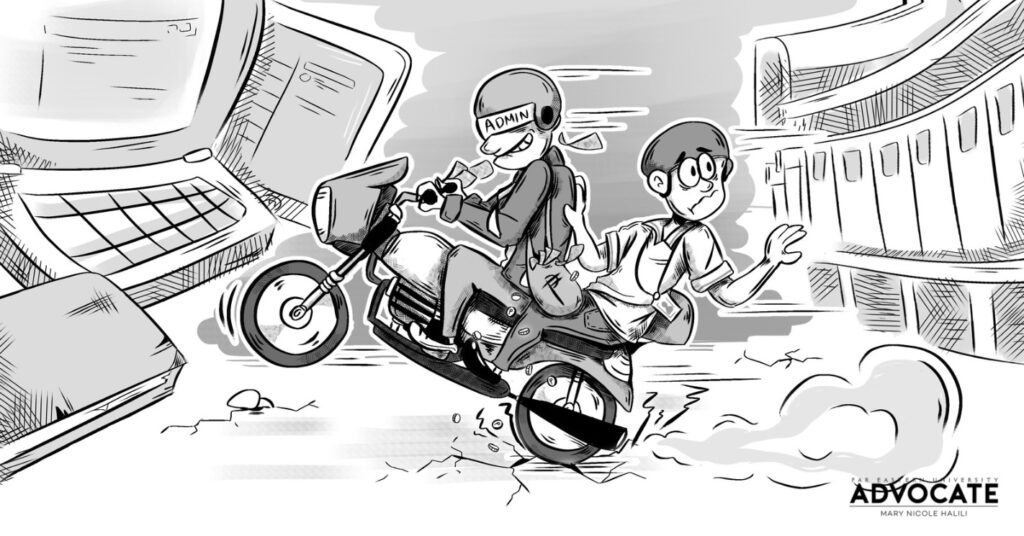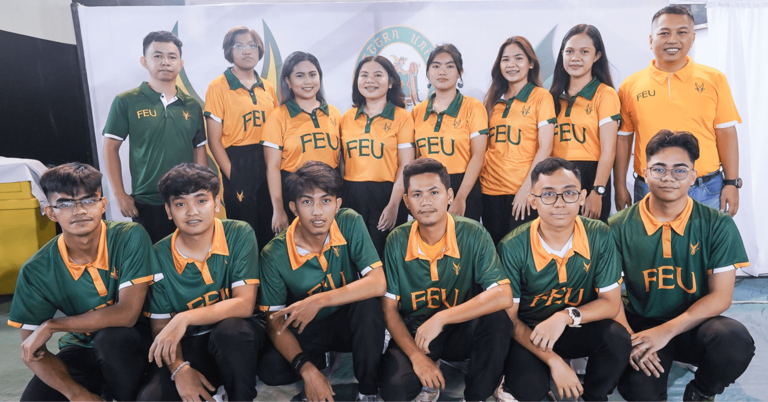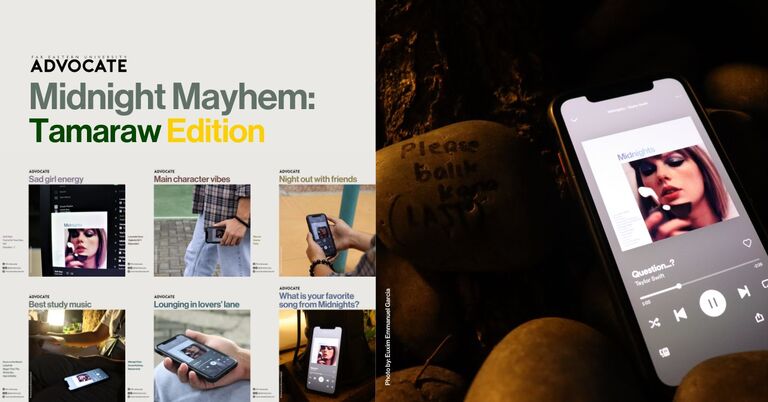
The Female Power in Literature
- September 08, 2021 04:12
FEU Advocate
July 20, 2025 20:43

Digital, flexible, future-ready—these are the buzzwords behind FEU’s hybrid model. At first glance, they signal innovation and progress, but they mask a deeper disconnect between institutional branding and student experience.
Through the Flexible environment, Learning culture shift, Intentional content, and Professional educators (FLIP) model, the University aims to implement a flipped classroom approach, combining on-site classes from Monday to Wednesday with online work from Thursday to Saturday. Pre-class lectures and readings are expected to replace traditional classroom instruction, while certain professional and laboratory courses will remain face-to-face.
Administrators have pointed to several reasons for the shift—including reducing the University’s carbon footprint and enhancing faculty readiness for hybrid teaching through training in instructional design.
These justifications, while relevant on paper, reveal a wider disparity in priorities—favoring institutional goals of branding, efficiency, and international alignment over the actual conditions students face in their learning environments.
Framed as a progressive step toward innovation and global competitiveness, the proposal taps into current trends in higher education: digitalization, self-paced learning, and flexible instruction. But for many students, the shift has been a cause of concern.
There was a recent Town Hall held at the University Conference Center last July 2, open to all students and positioned as a space for dialogue on the proposed hybrid learning shift. But while students were encouraged to voice their concerns, the event felt more like a managed presentation than a genuine consultation—administrators responded, but often with rehearsed talking points that left little room for real discussion or compromise.
For an academic institution that claims to prioritize student-centered learning, this reluctance to meaningfully absorb student input speaks volumes—about who gets to shape educational reforms, and who is simply expected to adapt.
This disconnect was amplified in the results of a #TamsCheck survey by the FEU Central Student Organization (FEUCSO), also shared during the event.
Out of 345 student respondents, over half expressed disagreement with the implementation of blended learning. Key concerns included unstable internet access, unclear tuition adjustments, lack of adequate study spaces, and the mental strain of navigating multiple modes of instruction.
Indeed, hybrid learning can offer real benefits—flexibility, autonomy, and access to digital resources—but only if students are equipped to take advantage of them. For many, especially those facing financial strain or infrastructural limitations, the shift imposes more burden than freedom.
“Flexibility” without support becomes a euphemism for passing responsibility onto students without addressing their needs.
This is where the danger lies. When the push for modernization becomes more about image than impact, educational reforms risk becoming performative. Hybrid learning should not serve as a branding tool for global relevance—it should serve students. If poorly implemented, it will not bridge learning gaps; it will widen them.
As FEU reviews its campus facilities, feedback mechanisms, and tuition structures in preparation for the shift, one thing remains clear: reforms must be grounded in the actual conditions students face, not just in institutional aspirations. That means investing in connectivity, expanding access to safe and quiet study spaces, and embedding genuine student participation in policy-making.
A digital future is only meaningful if it includes everyone—not just those who can afford to keep up.
If FEU continues along this path, it must prioritize access, equity, and educational integrity over performance metrics. Tuition fees should reflect actual resource usage. Faculty support and training must be strengthened to ensure meaningful engagement. And above all, students’ learning conditions—not institutional optics—should remain the basis for decision-making.
What’s unfolding in this shift isn’t just an educational pivot—it’s a reflection of a broader ideological turn. FEU’s move toward hybrid learning cannot be separated from the wider trend of neoliberal education, a model in which schools are increasingly managed like businesses. Here, decisions are shaped less by pedagogy and more by profitability, prestige, and public image. Education is no longer treated as a right or a public good but as a product to be bought, sold, and measured, often at the expense of those it claims to empower.
Framed as future-ready, this model aims to cut institutional costs while maintaining full revenue. But the burden shifts to the students―financially, emotionally, and logistically―without matching institutional support.
This is not a minor shift. It’s a system-wide transformation that reflects how education is increasingly being packaged as a marketable product. Policies are shaped to appear globally competitive rather than locally responsive. Strategies are tailored to fit frameworks that appeal to accreditors and rankings, often at the expense of real, grounded student experience.
And students are forced to adapt to this model: juggling pre-recorded lectures, dealing with unstable resources, and managing rising expenses. They are taught to normalize the compromise, even as tuition fees remain unchanged.
This is how the commercialization of education takes a deeper root. Not through blatant corporate branding, but through a model that looks progressive on paper while outsourcing the cost of “learning” to its recipients. Universities become brands, students become consumers, and classrooms become a service that rewards scale and convenience over depth and connection.
Students cannot afford to accept this shift in silence. If they are being asked to carry more of the burden, they must also be granted a seat at the table. Decision-making must become collaborative, not top-down. The Administration must involve them not as afterthoughts, but as co-architects of policies that will fundamentally shape their own education. Only through meaningful consultation can hybrid learning reflect the realities of those it intends to serve.
When students are repeatedly sidelined or consulted only for show, it doesn’t just cause frustration—it leaves a lasting mark. Over time, this breeds apathy—a quiet but powerful decline in student involvement in future University decisions. Feedback forms are left blank—not because students have nothing to say, but because they no longer believe that saying anything will matter. The decrease of trust in participatory processes weakens the very foundation of a responsive and accountable academic institution.
If FEU truly seeks to internationalize, it must prove that global ambition can go hand-in-hand with inclusive, student-centered reform. Innovation means little if it leaves the vulnerable behind.
Because education, at its core, is not a mere product to be packaged or a trend to be followed. It is a promise—to nurture minds, bridge gaps, and build futures. And no technological model, no matter how modern, can fulfill that promise if it fails to meet the realities of those most in need of support.
As FEU moves forward, it must recognize what’s really at stake. Hybrid learning should not become the polished face of a deeper structural shift that sidelines equity for global recognition. Because when education begins to mirror the logic of the market, it’s the students—especially the most vulnerable—who pay the price. And that is a cost no institution committed to educating should ever allow itself to accept.









